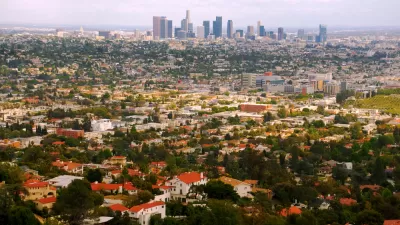California added 309,000 residents last year, an 8 percent drop compared to annual increases since 2010. The state added a net 85,000 housing units, accounting for losses to wildfires.

In addition to population changes for all 58 counties, a report [pdf] by the Demographic Research Unit of the California Department of Finance also noted housing production and destruction, which took into account major housing losses from Northern California wildfires in October.
There was a net gain of 85,000 units in 2016, which takes into account 13,200 homes demolished, compared to an average year's loss of 5,500 homes. The Wine Country wildfires explain the huge loses in these counties that suffered the most numeric housing loss in the state:
-
"Sonoma (2.6 percent), Napa (1.1 percent), and Mendocino (1.0 percent).
- "While the Thomas fire in Ventura County [contained on Jan. 12] was the largest by area, fewer housing units were affected. The current estimates do not include complete impacts from that fire, and will be revised next year."
Elsewhere in the Bay Area, "San Francisco added 4,464 housing units while 10,000 more people moved in, bringing the city’s population to 884,000," reports Peter Fimrite for the San Francisco Chronicle on May 1.
The city by the bay had the state’s third highest total population gain, behind only Los Angeles [33,000 persons (0.8 percent)] and San Diego [almost 20,000 persons ]. San Jose, which added 8,500 people, was fifth [after Irvine with a population of 276,000, added almost 9,000 persons in 2017].
The fastest growing large city was Sacramento at 1.43 percent, adding 7,000 people, edging out San Diego (1.42 percent).
More on net housing production in California's large cities from the report:
Multi-family housing growth outpaced single family housing by over 12,000 net units (“net” refers to new construction minus demolition), continuing a six-year trend. Los Angeles led the state with 12,488 multi-family units, comprising 90.2 percent of their total housing growth, followed by San Diego (5,241 for 87.9 percent), San Francisco (4,469 for 100 percent), and San Jose (2,421 for 93.5 percent).
The May 1 report did not break-down the demographic changes in terms of natural increase, domestic migration, and immigration. However, the department's Dec. 21, 2017 report [pdf], posted here, which analyzed growth between July 1, 2016 and July 1, 2017, included that data.
Also of interest is a March report (posted here) from the California Legislative Analyst's Office that looks at present and historic domestic migration data. Spoiler alert: It's been negative since 1990, but the gap between in and out-migration has narrowed considerably.
FULL STORY: California’s population grows to 39.8 million — and housing stock increases too

Alabama: Trump Terminates Settlements for Black Communities Harmed By Raw Sewage
Trump deemed the landmark civil rights agreement “illegal DEI and environmental justice policy.”

Planetizen Federal Action Tracker
A weekly monitor of how Trump’s orders and actions are impacting planners and planning in America.

The 120 Year Old Tiny Home Villages That Sheltered San Francisco’s Earthquake Refugees
More than a century ago, San Francisco mobilized to house thousands of residents displaced by the 1906 earthquake. Could their strategy offer a model for the present?

Ken Jennings Launches Transit Web Series
The Jeopardy champ wants you to ride public transit.

BLM To Rescind Public Lands Rule
The change will downgrade conservation, once again putting federal land at risk for mining and other extractive uses.

Indy Neighborhood Group Builds Temporary Multi-Use Path
Community members, aided in part by funding from the city, repurposed a vehicle lane to create a protected bike and pedestrian path for the summer season.
Urban Design for Planners 1: Software Tools
This six-course series explores essential urban design concepts using open source software and equips planners with the tools they need to participate fully in the urban design process.
Planning for Universal Design
Learn the tools for implementing Universal Design in planning regulations.
Clanton & Associates, Inc.
Jessamine County Fiscal Court
Institute for Housing and Urban Development Studies (IHS)
City of Grandview
Harvard GSD Executive Education
Toledo-Lucas County Plan Commissions
Salt Lake City
NYU Wagner Graduate School of Public Service





























